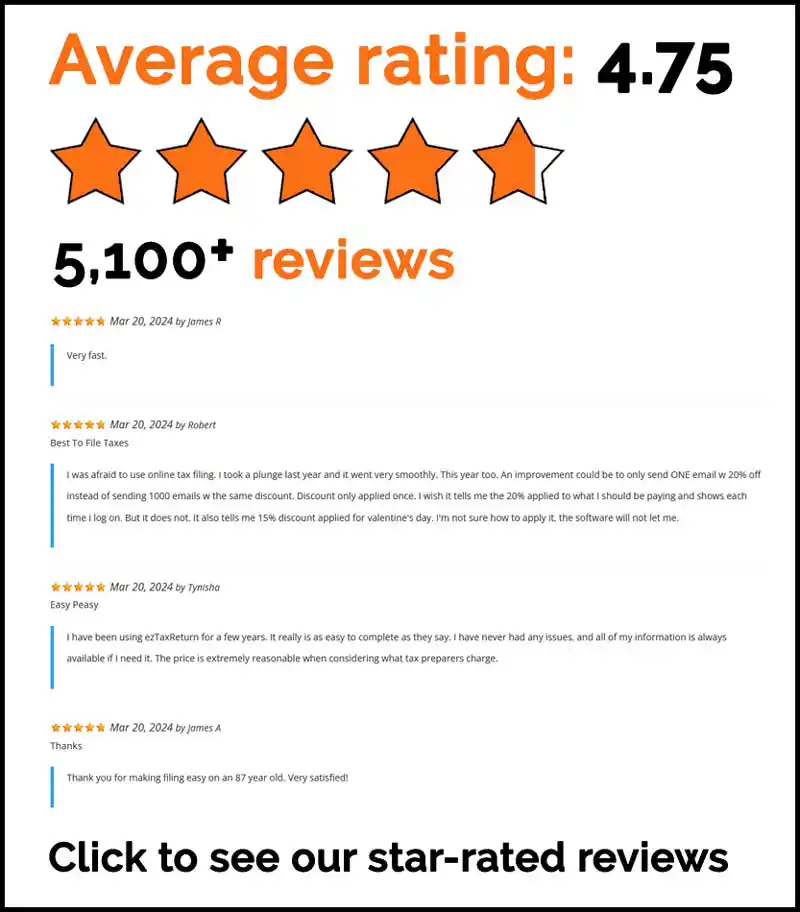The information in this article is up to date for tax year 2025 (returns filed in 2026).
Benjamin Franklin once said that “In this world nothing can be said to be certain, except death and taxes.” Although you can’t completely avoid your tax obligation, there are things you can do to reduce the amount you owe each year. Here are some basic tax-saving strategies everyone needs to know, including the importance of a tax planning strategy.
Why You Need a Tax Planning Strategy
The goal of tax planning is to identify opportunities to reduce taxable income, maximize tax credits and deductions, and optimize tax strategies. Staying up-to-date with changes in tax laws and regulations is essential, as it allows you to adjust your strategies accordingly. By taking a proactive approach to tax planning, you can minimize your tax burden, maximize your wealth, and achieve your financial goals.
Strategies for Minimizing Taxable Income
Minimizing taxable income is a key component of strategic tax planning. Taxable income is the portion of your income that is subject to income taxes, and reducing it can significantly lower your tax liability. Here are several ways to minimize taxable income:
- Maximize Tax Deductions: Tax deductions allow you to subtract certain expenses from your total income, effectively reducing your taxable income.
- Utilize Tax Credits: Tax credits directly reduce your tax liability and can be more valuable than deductions.
- Take Advantage of Tax-Deferred Savings: Accounts like 401(k)s and IRAs let you save for retirement while reducing your taxable income.
- Invest in Tax-Efficient Investments: Certain investments, such as municipal bonds and index funds, offer tax-efficient returns.
By implementing these strategies, you can reduce your tax burden and maximize your wealth.
Maximize Your Tax Deductions
One of the easiest ways to save money on taxes is by maximizing your tax deductions. Deductions let you subtract certain eligible expenses from your total income, which lowers your taxable income and, ultimately, the amount you owe to the IRS. Common tax deductions include things like mortgage interest, student loan interest, and charitable contributions. By keeping track of these expenses throughout the year, you can take advantage of them when tax time rolls around and significantly reduce your taxable income. It’s like having a built-in discount on your taxes, so be sure to claim all the tax deductions you’re eligible for!
Claim All the Money-Saving Tax Credits You Can
The IRS offers a bunch of tax credits and deductions which can save you hundreds or thousands of dollars, but many taxpayers fail to claim them. Knowing what’s available makes it easier to claim all eligible credits and deductions. 4 out of five eligible workers reap the benefits of claiming the Earned Income Tax Credit annually. The credit amount varies based on your filing status and the number of children you claim. Another tax break that’s valuable for families is the Child Tax Credit. It is worth up to $2,200 per child. Ensure you get all the money-saving credits and deductions you deserve by doing your taxes with ezTaxReturn. It’s fast, ez and you’ll get the biggest possible refund, guaranteed.
Max Out Your 401K
Maxing out your 401k can bring you closer to achieving your retirement goals while reducing your tax bill. When you contribute to a 401k, the money comes out of your paycheck before taxes are deducted. As a result, you’ll have less taxable income and may pay less taxes when you file your return. Even if you can’t afford to max out the account, at least contribute enough to receive your full employer match. It’s free money so don’t let it slip through your fingers.
Contribute to an Individual Retirement Account (IRA)
If you and your spouse aren’t covered by an employer retirement plan, consider opening a traditional IRA. Your contributions may be tax deductible, and your earnings will grow tax-free until you start taking distributions. The maximum limit is $7,000 ($8,000 if you’re at least 50 years old) for 2025. The last day to make contributions for the 2025 tax year is April 15, 2026.
Boost Your Returns with Tax-Efficient Investment Strategies
Another great tax planning strategy is to invest in tax-efficient investments. These are investments that help you keep more of your returns by minimizing the taxes you pay. For example, municipal bonds are a popular choice because the interest income is often exempt from federal (and sometimes state) taxes. Similarly, index funds tend to be tax-efficient since they generally generate fewer taxable events, like capital gains, compared to actively managed funds. By focusing on these types of investments, you can grow your wealth while keeping your tax bill in check, making your money work smarter for you.
Save Money in a 529 Plan
A 529 plan is a tax-advantaged account designed to help families pay for K-12 private school tuition or higher education expenses (college, trade school or vocational school). You don’t pay any income taxes on your earnings and your withdrawals are tax-free when used for qualified education expenses. Another major perk is that most states allow you to deduct your 529 plan contributions when you file your state income taxes.
Fund a Flexible Spending Account (FSA)
A flexible spending account (FSA) is an employee benefit that lets you set aside money for medical expenses. For 2025, the contribution limit is $3,300. The money is deducted from your paycheck before taxes, so you won’t pay any income taxes on your contributions. The downside is that if you leave your job, you can’t take the money with you. Plus, you must use the full amount by December 31st, or you lose your FSA dollars. Some employers allow you to carry over an unused portion, but you’re limited to $660.
Contribute to a Health Savings Account (HSA)
If you’re enrolled in a high-deductible health plan, you may qualify for an HSA. An HSA is a savings account that lets you set aside pre-tax dollars to pay for qualified medical expenses. Contributing to an HSA has three tax benefits. Your earnings grow tax-free, your withdrawals are tax-free if the money is used for eligible expenses, and your contributions lower your taxable income, so you pay less in taxes. The 2025 maximum contribution limit is $4,300 for individual coverage and $8,550 for family coverage. You contribute even more once you turn 55 years old. At that age, you can contribute an additional $1,000. The lasy day to make contributions for tax year 2025 is April 15, 2026.
Year-End Tax Planning Strategies
Year-end tax planning strategies are essential for minimizing your tax liability and maximizing your wealth. Here are some common strategies to consider:
- Maximize Contributions to Retirement Accounts: Contributing to accounts like 401(k)s and IRAs can help reduce your taxable income and lower your tax liability.
- Harvest Capital Losses: Selling securities that have declined in value can help offset capital gains and reduce your tax liability.
- Donate to Charity: Charitable donations can provide a tax deduction and help reduce your taxable income.
- Utilize Tax Credits: Tax credits, such as the Earned Income Tax Credit and the Child Tax Credit, can directly reduce your tax liability.
- Review and Adjust Withholding: Ensuring the correct amount of taxes is being withheld can help you avoid penalties and interest.
By implementing these year-end tax planning strategies, you can effectively minimize your tax liability and maximize your wealth.
Looking to maximize your tax savings? Filing your taxes with ezTaxReturn is a fast, easy, and secure way to ensure you’re getting the biggest possible refund. Get started today and take the stress out of tax season!
Frequently Asked Questions
What is tax planning and why is it important?
Tax planning is the process of organizing your finances to reduce your tax liability legally. It helps you save money, maximize deductions and credits, and plan for your financial goals.
How can I start tax planning?
Start by reviewing your income, expenses, and potential deductions. Consider contributing to retirement accounts, tracking medical or education expenses, and estimating taxes throughout the year rather than waiting until filing season.
What are some common tax-saving strategies?
Common strategies include contributing to a traditional IRA or 401(k), using Health Savings Accounts (HSAs), claiming tax credits, timing deductions, and planning for capital gains and losses.
Can I save on taxes if I’m self-employed?
Yes. Self-employed individuals can deduct business expenses, contribute to SEP IRAs or Solo 401(k)s, and take advantage of the Qualified Business Income (QBI) deduction to reduce taxable income.
Are tax deductions or tax credits more valuable?
Tax credits are generally more valuable because they directly reduce your tax bill dollar-for-dollar. Deductions lower your taxable income, which reduces your taxes indirectly.
How can tax planning help with retirement savings?
By contributing to tax-advantaged accounts like IRAs, 401(k)s, or HSAs, you reduce taxable income now while saving for retirement. Some accounts also allow your investments to grow tax-free or tax-deferred.
Can charitable donations reduce my taxes?
Yes. Donations to qualified charitable organizations can be deducted if you itemize your taxes, lowering your taxable income and potentially increasing your refund.
Is it too late to start tax planning during the year?
It’s never too late. Even mid-year, you can adjust contributions, make charitable donations, or plan other deductions before the end of the tax year to save money.
How does timing income and expenses affect taxes?
Shifting income or expenses between tax years can help manage your taxable income. For example, deferring a bonus or accelerating deductible expenses may reduce your current-year tax bill.
How do tax planning strategies differ for individuals vs. families?
Families may benefit from additional credits like the Child Tax Credit, Dependent Care Credit, and education-related deductions, while individuals focus more on retirement contributions and personal deductions.
Can small changes really make a big difference in taxes?
Yes. Small adjustments, like increasing retirement contributions, tracking business expenses, or claiming overlooked credits, can significantly lower your tax bill over time.
The articles and content published on this blog are provided for informational purposes only. The information presented is not intended to be, and should not be taken as, legal, financial, or professional advice. Readers are advised to seek appropriate professional guidance and conduct their own due diligence before making any decisions based on the information provided.




